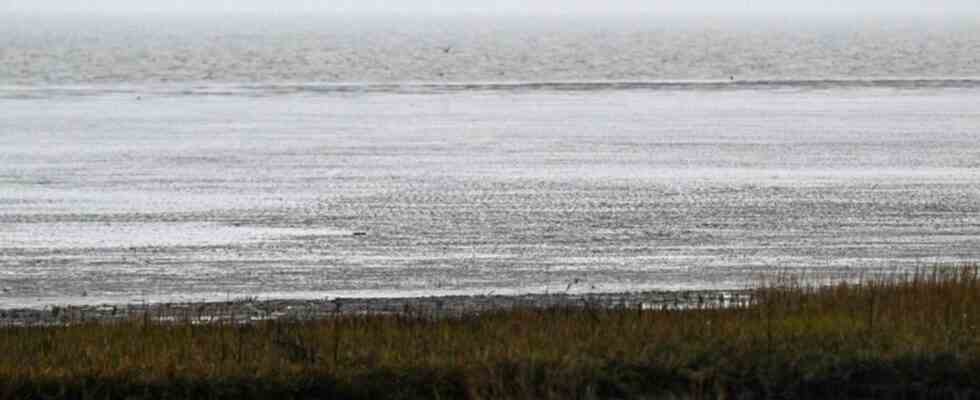study
Climate and environmental changes lead to species change in the mudflats
Birds fly over the mud flats in front of Dangast beach. photo
© Sina Schuldt/dpa
Mussels, snails or worms: According to a study, some animals are significantly less common in the Wadden Sea than they were 40 years ago. Researchers on the mainland see the reasons for this.
According to a study, the occurrence of certain animals such as snails, mussels, crabs and worms in the Wadden Sea off the East Frisian coast has decreased significantly over the past 40 years or so.
Researchers at the Senckenberg am Meer Institute (Wilhelmshaven) and the University of Oldenburg attribute this primarily to a decline in nutrient inputs from agriculture, for example, since the 1980s. This leads, among other things, to a decline in algae growth. Many creatures such as the mud snail would have less food as a result. Some animals, on the other hand, benefited from the reduced nutrient input.
“Since the 1980s, there have been stricter requirements for agriculture and municipal sewage treatment plants, which means that fewer nutrients get into the rivers such as the Elbe, the Weser or the Rhine – and thus also into our study area,” said the Senckenberg researcher and study author Ingrid Kroncke. The experts speak of de-eutrophication.
Number of animal species decreased from 90 to 81
For the study recently published in the journal “Frontiers in Marine Science”, the researchers compared data collected in the 1980s and 2018 at around 500 locations in the East Frisian Wadden Sea, i.e. between the East Frisian Islands and the mainland. Accordingly, the number of animal species decreased only slightly from 90 to 81. “The decrease in the total number of individuals per square meter is much more significant: Here there was an average decrease of around 31 percent,” said Kröncke.
According to the study, the frequency of occurrence of the common mud snail (Peringia ulvae), the tree tubeworm (Lanice conchilega) and the sand gaper (Mya arenaria) has decreased by more than 80 percent. The biomass of these species also fell just as significantly – for migratory birds resting in the Wadden Sea, and many fish, this food supply was reduced. According to the study, however, the better water quality had a positive effect on seagrass meadows and on oysters and other mussels that grow on rocks.
More lugworms
The team also noticed an increase in biomass in other species. In the case of the lugworm (Arenicola marina), for example, it increased by around 75 percent. The researchers see one reason for this increase in the rise in sea level. This triggers a stronger current that transports more sand onto the tidal flats and thus creates better living conditions for the lugworm and other species.
Since the 1980s, there have also been four registered invasive species, all of which are considered to be tolerant of higher temperatures, such as the Pacific oyster (Magellana gigas).
The researchers did not examine what the animal world looked like before the increased nutrient input.

